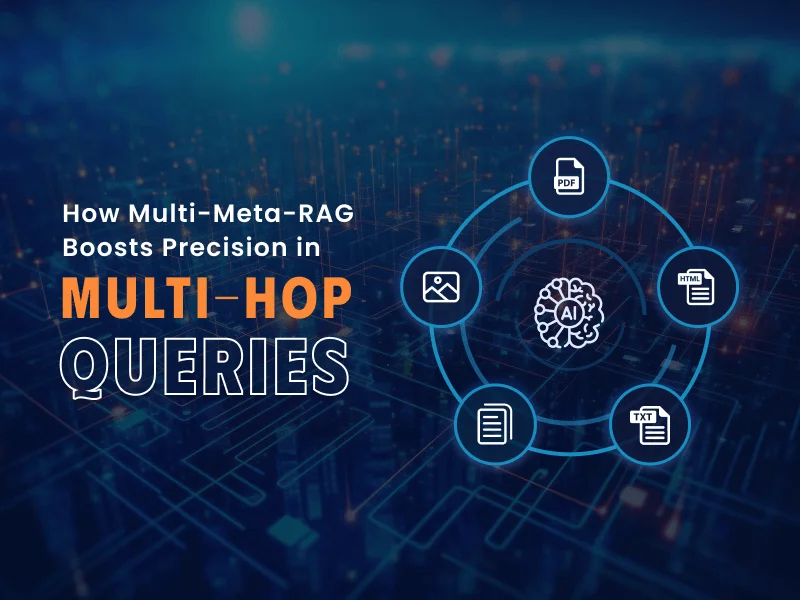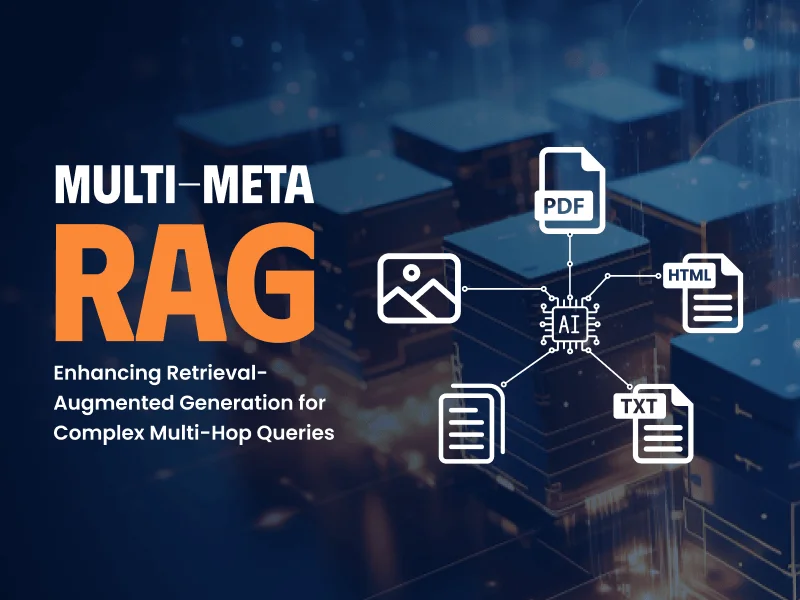With the consistent boom in industrial growth, businesses across the globe witness the need to embrace digital transformation.
The need for advanced artificial intelligence (AI) solutions such as Enterprise Generative AI has become increasingly evident and indispensable.
Generative AI refers to a branch of AI that can create new content such as images, text, and music without the need for manual processes or human intervention. This innovative technology has the potential to revolutionize the way businesses operate by automating complex tasks and improving their decision-making abilities.
In this blog, let’s take a look at a step-by-step guide on how to adapt or implement generative AI for your enterprise.
Step 1: Define Your Business Objectives
Before implementing generative AI, it is essential to define your business objectives. You may also consider the specific problems or pain points that you want to address.
Moreover, your business objectives may also revolve around streamlining your operations, enhancing customer experience, or gaining a competitive edge.
Once you have a clear understanding of your business objectives, you can identify the areas where the need for generative AI is most required.
Step 2: Assess Your Data Readiness
Generative AI relies heavily on data. Therefore, it is critical to assess if your team and workflows are ready to adopt the technology.
You may consider if you have the necessary data in a usable format. Besides that, you may also consider if your data quality is high enough to support generative AI.
In case your data is not ready, you may consider investing in data cleansing or data enrichment activities to ensure that your generative AI model performs efficiently.
Step 3: Choose the Right Generative AI Partner
Once you have defined your business objectives and assessed your data readiness, it is time to choose the right generative AI solution.
It is worth noting that there are a multitude of generative AI solutions available in the market. Hence choosing the right Generative AI Service offering depends on your specific needs and use case.
You may want to explore various Generative AI use cases and benefits for enterprises to better understand how this technology can align with your business goals.
Step 4: Develop and Train Your Generative AI Model
Once you have selected the right generative AI solution, the following step includes developing and training your generative AI model for optimal use.
This involves identifying the appropriate training data, selecting the right neural network architecture, and fine-tuning the model until it achieves the desired level of accuracy. The development and training process may be complex and time-consuming depending on the requirements. Hence it is recommended to work with a proficient AI development team for the desired results.
Step 5: Integrate Your Generative AI Model with Your Enterprise Systems
Once your generative AI model is trained and tested, the final and most crucial step is to integrate it with your enterprise systems. This involves integrating your generative AI model with your existing software, processes, tools, and workflows.
This step will call for the need to work with your IT partner to ensure that your generative AI model is integrated seamlessly and can be easily scaled and adjusted as and when required.
Acuvate offers a centralized generative AI platform designed specifically for enterprises looking to streamline and manage their AI implementation effectively.
Key Considerations for Implementing Generative AI
Implementing Generative AI requires careful consideration of multiple related factors. These factors include data privacy and security, model accuracy, and the potential impact on employees.
Therefore, to ensure a successful implementation, it’s vital to address these concerns and work with a proficient and experienced partner.
The way forward
The way forward for Generative AI in the enterprise is promising, exciting, and brimming with potential. As technology continues to advance and make its way to becoming more sophisticated, it is expected to become more accessible and user-friendly. Further, it holds the potential to provide organizations with additional opportunities to leverage its capabilities for their digital transformation initiatives.
One of the key areas of development for Generative AI is in the realm of natural language processing (NLP). The ability to understand and interpret human language has the potential to revolutionize endless enterprise AI fronts. This can range from customer service and support to sales and marketing.
As NLP technologies continue to advance, we can expect to see more advanced chatbots, sophisticated and comprehensive software, and virtual assistants that can interact with customers and employees more naturally and intuitively.
Another area of growth for Generative AI is in the automation of creative tasks. In the past, creative tasks such as design, writing, and music composition were largely the domain of human experts. However, with the emergence of Generative AI, machines are now capable of generating creative outputs that are virtually indistinguishable from those created by humans. This has the potential to transform an array of industries including advertising, marketing, entertainment, and music.
Finally, we may also witness an increased integration between Generative AI and other emerging technologies such as blockchain and the Internet of Things (IoT).
By leveraging the power of Generative AI to analyze and interpret data from connected devices and systems, organizations can gain unprecedented insights into their operations and customers. This will enable organizations to make informed decisions and take proactive steps to optimize their workflows and offerings.
In a nutshell, the future of Generative AI in the enterprise is bright. As the technology continues to consistently grow, it can become an increasingly important tool for organizations that are looking to drive business transformation and automation. By leveraging the power of
Generative AI, businesses can unlock new levels of creativity, efficiency, and innovation, paving the way for a more productive and profitable future.
What we have to say
Generative AI has the potential to transform the way enterprises operate by automating complex tasks, improving decision-making abilities, and enhancing workflows.
By following the step-by-step guide outlined in this blog, enterprises can successfully adapt or implement generative AI solutions to meet their business objectives. As businesses continue to embrace digital transformation and enterprise automation, generative AI is likely to become an increasingly critical component of their technology stack.



